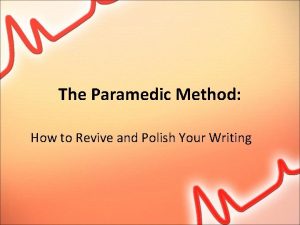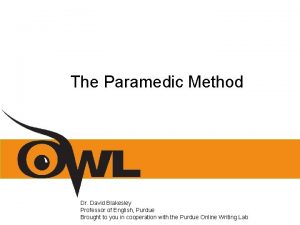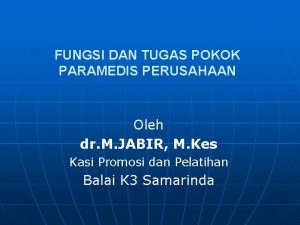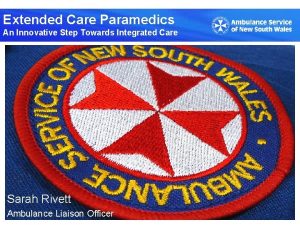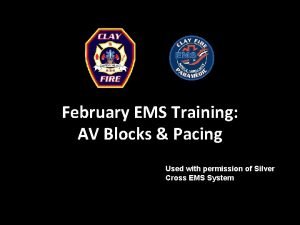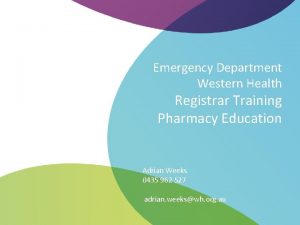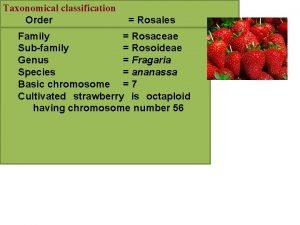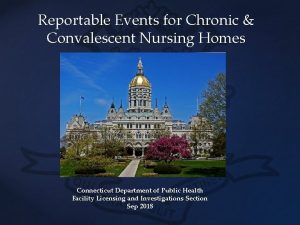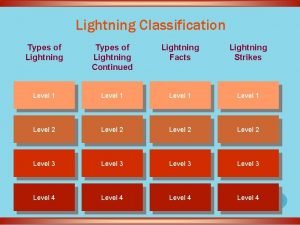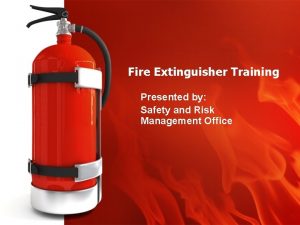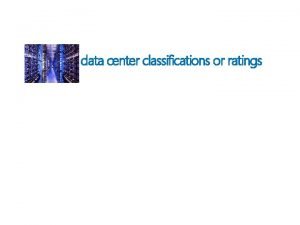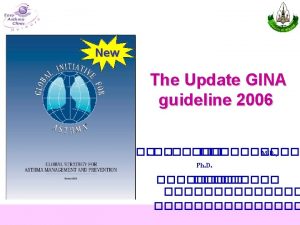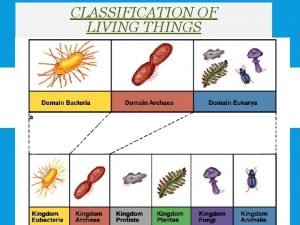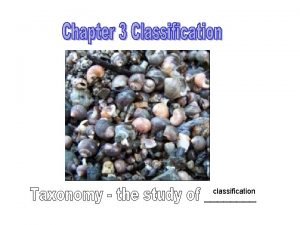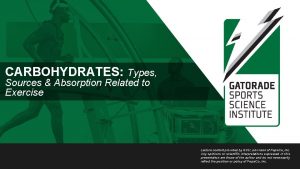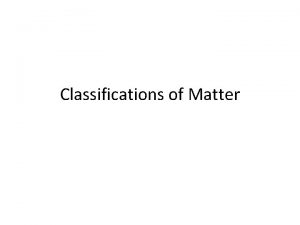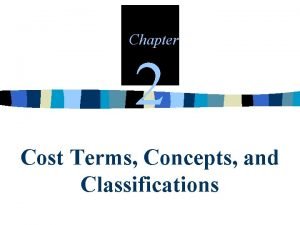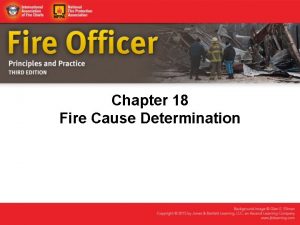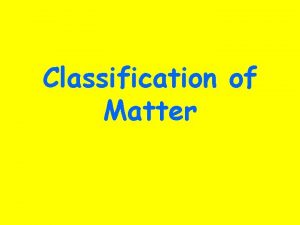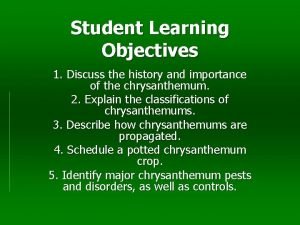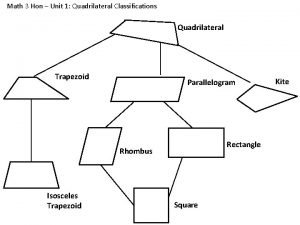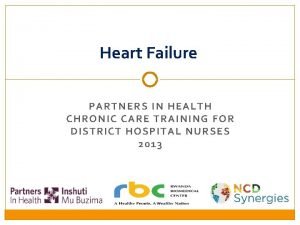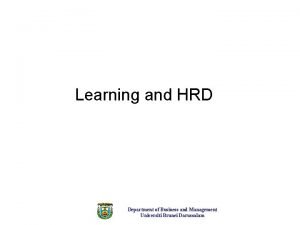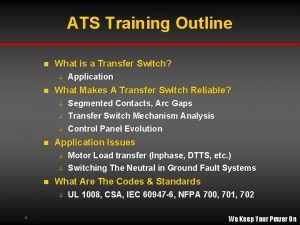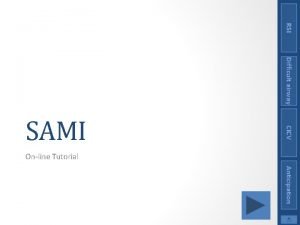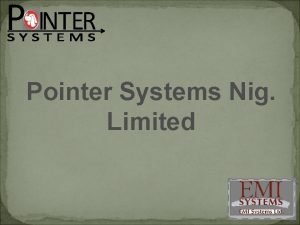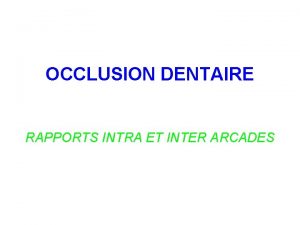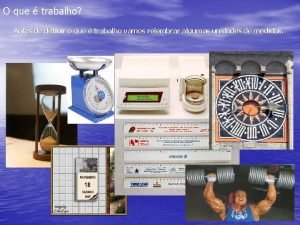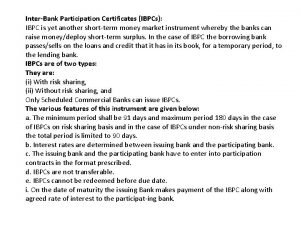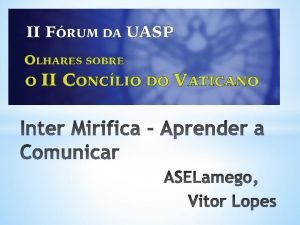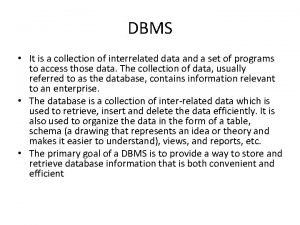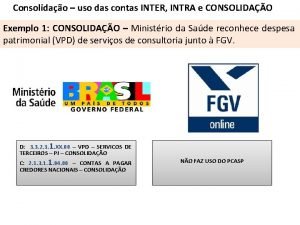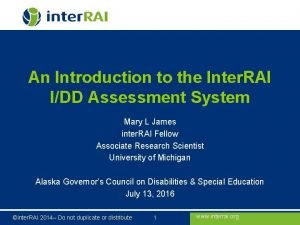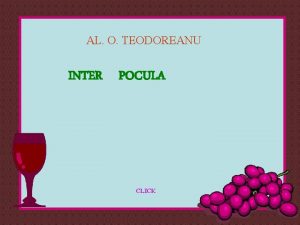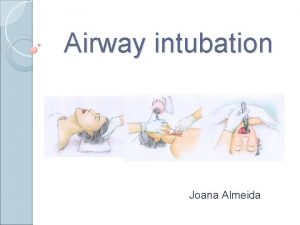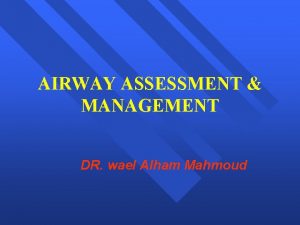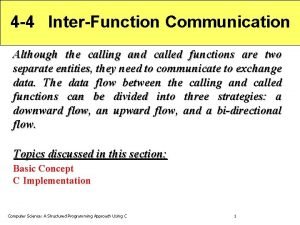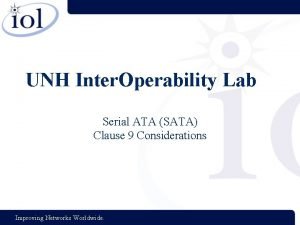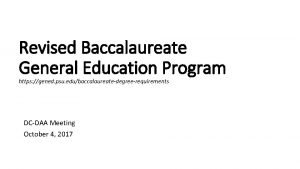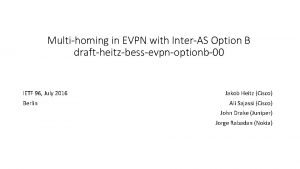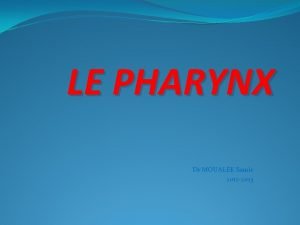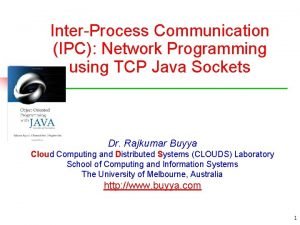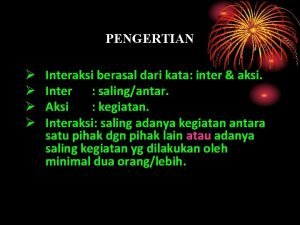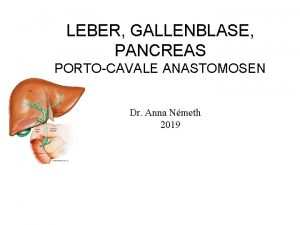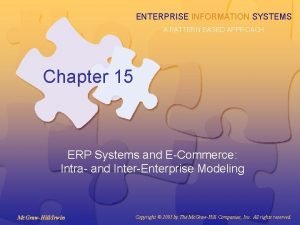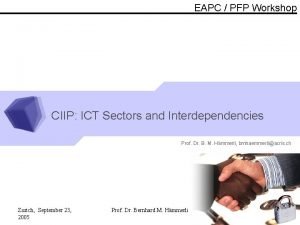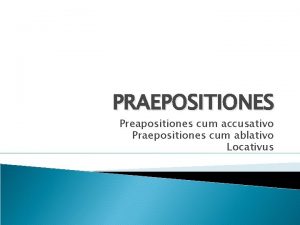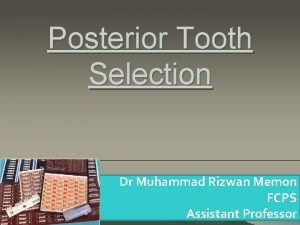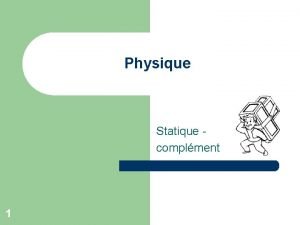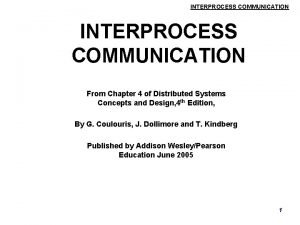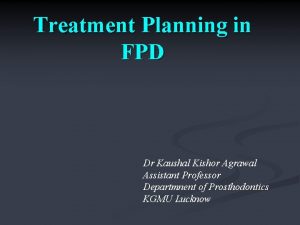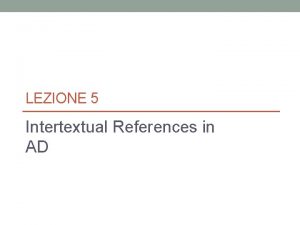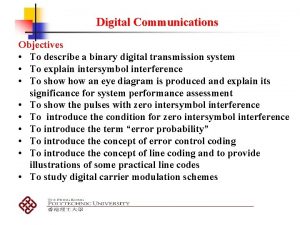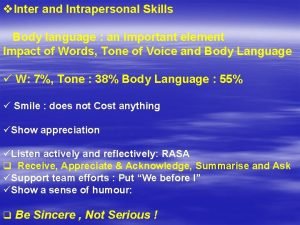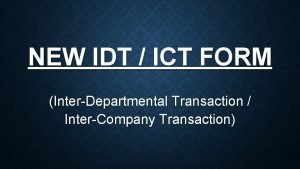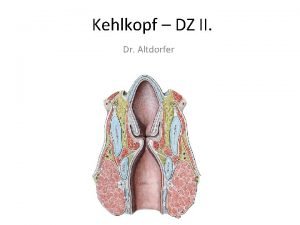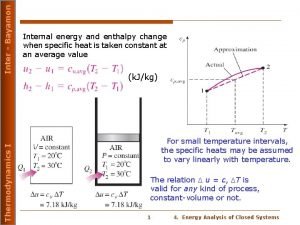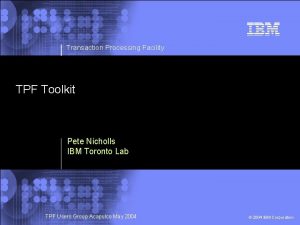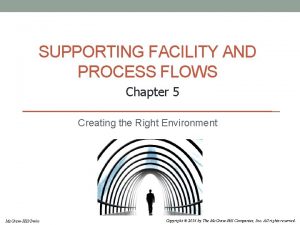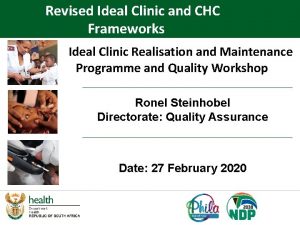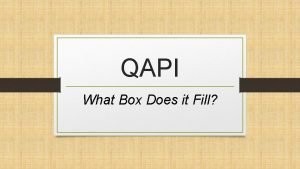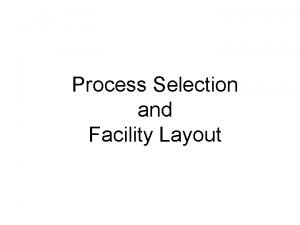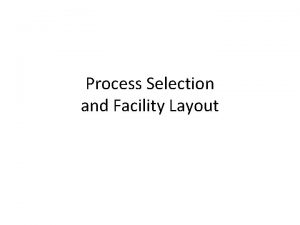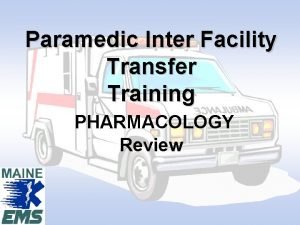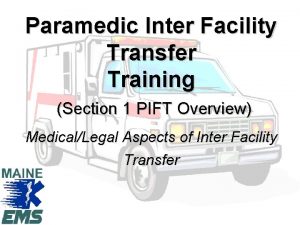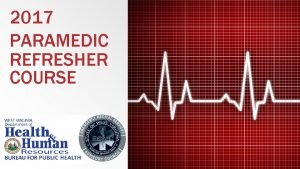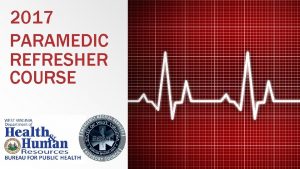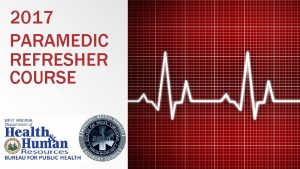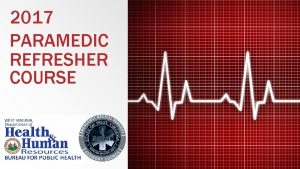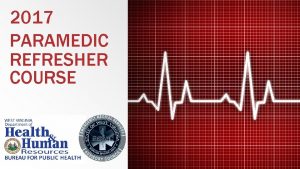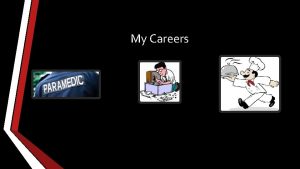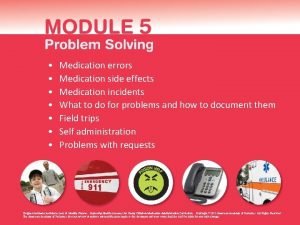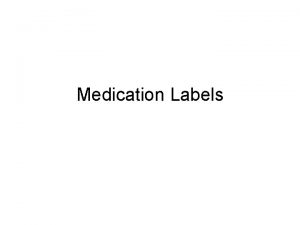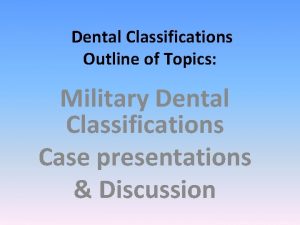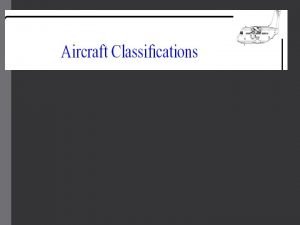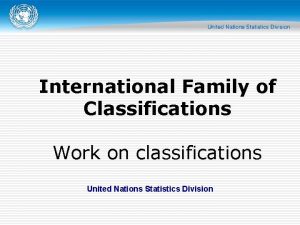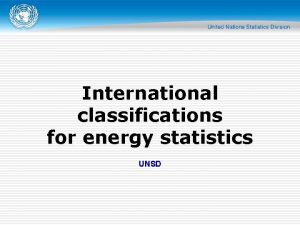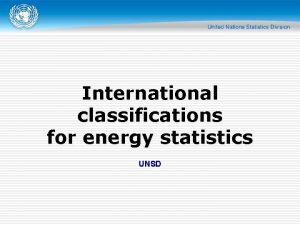Paramedic Inter Facility Transfer Training MEDICATION CLASSIFICATIONS Medication








































































































































































- Slides: 168

Paramedic Inter Facility Transfer Training MEDICATION CLASSIFICATIONS

Medication and Transport • Most PIFT medications are not found in the National Standard Curriculum for Paramedic • Medications usually found being administered to critical care patients

CLASSIFICATIONS OF MEDICATIONS 18 classifications of drugs plus OTC medications

CLASSIFICATIONS OF MEDICATIONS • • • Anticoagulants Anticonvulsants Antidiabetics Antidysrhythmics Antihypertensives Anti-infectives Antipsychotics Cardiac glycosides Corticosteroids Drotrecogin • • GI Agents IV fluids Narcotics Parenteral Nutrition Platelet Aggregation Inhibitors Respiratory Medications Sedatives Vasoactive Agents

ALLERGIC REACTIONS • All medications have the potential to create an allergic reaction • Be vigilant for signs of allergic reactions or anaphylaxis • Treat according to MEMS protocol

• OK, let’s look at the drug classifications in the PIFT program

ANTICOAGULANTS • Used to prevent extension of existing clot or formation of new blood clots • Does not dissolve existing clots • Patients may be on these drugs for extended periods of time

ANTICOAGULANTS • PATIENTS ON ANTICOAGULANTS • MI or suspected MI patients • DVT—deep vein thrombosis • pulmonary embolism • DIC—disseminated intravascular coagulation • Other clotting-related disorders

ANTICOAGULANTS • Most commonly used anticoagulants: • Heparin • Lovenox (Enoxaparin) Generally administered IV but in certain cases may be given SQ

ANTICOAGULANTS • What to watch for: • Signs of bleeding, either internally or externally • Monitor vitals frequently • Signs and symptoms of shock • Altered level of consciousness

ANTICOAGULANTS • Potential interventions in case of adverse reaction: • Consider discontinuing drug • Control any external bleeding • Treat for shock • Consider contacting medical control

THROMBOLYTICS • Paramedics are not permitted to transport patients with thrombolytic drugs running • BUT…. . – Paramedics may transport patients shortly after completion of thrombolytic therapy. – These patients may present in several different ways…

THROMBOLYTICS • Patients may have received thrombolytics for either an acute MI or non-hemorrhagic CVA • Patients have reperfused and have improved OR… • Failed perfusion and continue to show symptoms

THROMBOLYTICS • What to watch for during transport: – Signs of bleeding • Particularly intracranial or GI bleeding – Signs of shock – Altered level of consciousness – Hypotension – Dysrhythmias

THROMBOLYTICS • Potential interventions for adverse reactions: – Treat dysrhythmias as per Maine EMS protocols – General supportive measures – Consider fluids for hypotension – Contact OLMC for options including diversion

ANTICONVULSANTS • Used primarily to prevent or treat seizures • Seizures are often associated with epilepsy, head injury, fever, infection or unknown etiology

ANTICONVULSANTS • Anticonvulsants consist of three types of drugs: 1. Benzodiazepines 2. Barbiturates 3. Dilantin or Cerebyx

ANTICONVULSANTS • BENZODIAZEPINES: – Lorazepam (Ativan) – Midazolam (Versed) – Diazepam (Valium)

ANTICONVULSANTS • May be administered IV, IM, PO or rectally in infants • Usually administered by IV infusion pump during interfacility transport

ANTICONVULSANTS • Barbiturate of choice for many years has been PHENOBARBITAL • DILANTIN (phenytoin) and CEREBYX (fosphenytoin) are also frequently used to suppress and/or control seizure activity

ANTICONVULSANTS • It is not uncommon to see 2 or more different anticonvulsants used in combination during interfacility transport • Doses may have to be altered during transport due to increased seizure activity

ANTICONVULSANTS • What to watch for: – Hypotension – Respiratory depression – Vomiting – Bradycardia and other dysrhythmias – Increased seizure activity

ANTICONVULSANTS • Potential interventions in case of adverse reaction: • Consider discontinuing drug or drugs • Consider fluids for hypotension • Support ventilations as necessary • Treat dysrhythmias per Maine EMS protocols • If increased seizure activity occurs, consider increasing dosage if permitted by transfer order or contact OLMC

ANTIDIABETICS • In the context of interfacility transport, it is not uncommon to encounter patients that require treatment with antidiabetic agents • In most cases, the medication that you will be monitoring or administering will be INSULIN.

ANTIDIABETICS • Patients will generally have a diagnosis of: – Hyperglycemia – Hyperglycemic coma – Hyperosmolar hyperglycemic nonketotic coma

ANTIDIABETICS • INSULIN comes in many forms. They are generally either rapid, intermediate or long acting preparations. • Common names include the following: – Humulin – Novolin – NPH – Iletin – Lantus

ANTIDIABETICS • Administration will generally be by IV infusion in the interfacility mode but… – In some long distance transfers it may be necessary to administer the patient’s routine dose of insulin by subcutaneous injection

ANTIDIABETICS • Blood glucose monitoring may be necessary depending on the patient’s condition and the length of the transfer

ANTIDIABETICS • What to watch for during transport: – Seizures – Alterations in blood glucose – Signs and symptoms of hypoglycemia • Nausea, anxiety, altered level of consciousness, tachycardia, diaphoresis

ANTIDIABETICS • Potential interventions: – Treat hypoglycemia or seizures as per Maine EMS protocols – Consider discontinuing or altering the infusion rate of insulin as per OLMC – Provide general supportive measures

ANTIDYSRHYTHMICS This is the largest classification of medication in the PIFT module as it contains several sub-classifications

ANTIDYSRHYTHMICS • Contained within this section are the following sub-classes of medications: – – Beta Blockers Calcium Channel Blockers Cardiac Glycosides Miscellaneous Antidysrhythmics such as: • Amiodarone (Cordarone) • Magnesium sulfate • Procainamide (Pronestyl) • Phenytoin (Dilantin) • Lidocaine

NOTE • Certain medications will appear in several different classifications during this program as some of them are indicated for different medical conditions. – Ex. Beta blockers and calcium channel blockers appear in this section as antidysrhythmic agents but will also be seen in the section on Antihypertensives

ANTIDYSRHYTHMICS • What kinds of patients will we see on antidysrhythmic medications? – CARDIAC PATIENTS • • • Confirmed or suspected MIs Angina Tachydysrhythmias Bradydysrhythmias with or without heart blocks Atrial fibrillation and flutter PVCs and other ectopic conditions

BETA BLOCKERS Metoprolol (Lopressor) Propranolol (Inderal) Atenolol (Tenormin) Esmolol (Brevibloc) • During transport primarily used to treat various tachydysrhythmias, atrial fibrillation and atrial flutter • Used to treat MIs but generally given in hospital prior to transfer

CALCIUM CHANNEL BLOCKERS Diltiazem (Cardizem) Verapamil (Calan) Nifedipine (Procardia) • Treatment of tachydysrhythmias, atrial fibrillation and flutter

CARDIAC GLYCOSIDES Digoxin (Lanoxin) • Treatment of tachydysrhythmias, particularly to control ventricular rate in atrial fibrillation or flutter; PSVT

AMIODARONE • Generally used to treat atrial and ventricular tachydysrhythmias during interfacility transport

LIDOCAINE • Used to treat wide complex tachycardia and ventricular ectopy

ROUTES OF ADMINISTRATION • Antidysrhymics will almost always be administered IV by infusion pump

ANTIDYSRHYTHMICS • WHAT TO WATCH FOR DURING TRANSPORT: – Dysrhythmias – Altered levels of consciousness – Hypotension/changes in vital signs – Seizures

ANTIDYSRHYTHMICS • Potential interventions in case of adverse or allergic reaction: – Treat dysrhythmias and seizures per Maine EMS protocols – Consider fluids for hypotension if not contraindicated by patient’s condition – OLMC for option of discontinuing drug, adjusting dosage or diversion – General supportive measures

ANTIDYSRHYTHMICS • KEEP IN MIND THAT ALL PATIENTS ON CARDIAC MEDICATIONS SHOULD BE TRANSPORTED ON A CARDIAC MONITOR • Record any changes in rhythm • Take frequent vitals

ANTIDYSRHYTHMICS • REMEMBER THAT CARDIAC PATIENTS CAN DETERIORATE QUICKLY AND YOU MUST BE PREPARED FOR A CODE OR OTHER SERIOUS EVENT AT ALL TIMES

ANTI-INFECTIVES • Includes the following: • Antibiotics • Antivirals • Antifungal agents Rarely will we see an antiviral or antifungal agent on an interfacility transfer

ANTI-INFECTIVES • What types of patients can we expect to see on anti-infectives? • Pneumonia/respiratory infections • Meningitis • Sepsis • Cellulitis • UTI • Various infectious diseases

ANTI-INFECTIVES • Most common medications used in transport: • Vancomycin • Rocephin • Penicillin • Cefazolin (Ancef) • Gentamicin

ANTI-INFECTIVES Almost always administered IV

ANTI-INFECTIVES • What to look for: • Signs and symptoms of allergic reaction • Induration or redness at the IV site • Altered level of consciousness • Nausea/vomiting

ANTI-INFECTIVES • Note: – Antibiotics have a greater potential for allergic reactions than any other drugs

ANTIHYPERTENSIVES • These medications are essentially used to control hypertensive crisis of various etiologies • Included within the classification of antihypertensives are several other classes of medications that have antihypertensive action

ANTIHYPERTENSIVES • Other classifications and subclassifications of antihypertensives include: – ACE Inhibitors – Beta Blockers – Alpha Blockers – Calcium Channel Blockers – Diuretics – Vasodilators

COMMONLY USED ANTIHYPERTENSIVES • ACE Inhibitors • Benazepril (Lotensin) • Enalapril (Vasotec) • Lisinopril (Zestril) • Captopril (Capoten)

ANTIHYPERTENSIVES • Alpha Blockers – Doxazosin (Cardura) – Prazosin (Minipress) – Terazosin (Hytrin)

ANTIHYPERTENSIVES • Beta Blockers – Atenolol (Tenormin) – Propranolol (Inderal) – Metoprolol (Lopressor) – Labetalol (Normodyne)

ANTIHYPERTENSIVES • Calcium Channel Blockers – Diltiazem (Cardizem) – Verapamil (Calan) – Nifedipine (Procardia) – Amlodipine (Norvasc)

ANTIHYPERTENSIVES • Diuretics – Furosemide (Lasix) – Bumetadine (Bumex) – Torsemide (Demadex)

ANTIHYPERTENSIVES • Vasodilators –Hydralazine (Apresoline) –Minoxidil (Loniten) –Nitroglycerin

ANTIHYPERTENSIVES • Routes of Administration: – Generally IV but may be given PO in certain cases on long transfers

ANTIHYPERTENSIVES • What to watch for during transport – Severe hypotension – Nausea/vomiting – Symptomatic bradycardia – Other dysrhythmias

ANTIHYPERTENSIVES • Possible interventions when adverse reactions occur during transport: – Treat bradycardia and other dysrhythmias as per Maine EMS protocols – Consider fluids for hypotension if not contraindicated by patient condition

ANTIHYPERTENSIVES • Possible Interventions when adverse reactions occur during transport: – Consider promethazine ( Phenergan ) for nausea – Contact OLMC for options of discontinuing medication, altering dosage or diversion

ANTIHYPERTENSIVES • All patients on antihypertensive medications should be transferred on a cardiac monitor • Take frequent vitals


BREAK

SCENARIO 1 • You are transporting a cardiac patient from a local community hospital to Eastern Maine Medical Center. The patient has a diagnosis of unstable angina. Transport time to EMMC is approximately 90 minutes. • As you left the sending facility, the patient had the following vitals: • HR---76 BP---122/76 R---18

SCENARIO 1 • Medications – Oxygen at 4 lpm via nc – Nitroglycerine IV 14 mcg/min – Heparin IV 1000 u/hour – Aggrastat IV 80 mcg/min – You also have orders for Morphine 2 -5 mg prn for pain management

SCENARIO 1 • 30 minutes into the transfer your patient begins to appear anxious, becomes slightly diaphoretic, and complains of some SOB. • You take a new set of vitals: – HR---104 – BP---96/62 – R-----20

SCENARIO 1 1. 2. 3. What do you suspect? What action would you take? What questions do you have for medical control?

ANTIPSYCHOTICS • The number of psychiatric transfers has increased dramatically in recent years • A many patients are transferred with chemical restraints and sometimes need to be given additional medication during transport

ANTIPSYCHOTICS • Medication is administered to control psychotic behavior that is otherwise difficult to manage in an ambulance • Patients will have a number of different diagnoses including agitation, schizophrenia, depression, delusional disorders, etc.

ANTIPSYCHOTICS A number of different medications are used to provide chemical restraint

CHEMICAL RESTRAINT • Common Chemical Restraint Medications: – Haloperidol (Haldol) – Chlorpromazine (Thorazine) – Risperidone (Risperdal) – Benzodiazepines (Diazepam, Lorazepam, Midazolam)

CHEMICAL RESTRAINT • These drugs may be given alone or in combination with other antipsychotic drugs • May also be administered in combination with other medications such as diphenhydramine (Benadryl) for added sedative effect

ANTIPSYCHOTICS • Routes of administration – Generally given IV but may be given IM or PO in some cases – For IV medication, the patient should leave the hospital with a saline lock in place if possible

ANTIPSYCHOTICS • Considerations… – Discuss all medication issues with the sending physician before leaving the hospital – If the patient is sedated upon your arrival, ask if the drug will last long enough for you to reach your destination • Transfers of more than 2 hours are not uncommon

ANTIPSYCHOTICS • Considerations… – If medication will be needed during transport, do not wait until the patient becomes disruptive and combative – Make sure that any patient who is medicated or may require medication during transport is “Blue papered”

ANTIPSYCHOTICS • What to watch for during transport: – Respiratory depression – Hypotension – Seizures – Extrapyramidal reactions • Agitation, muscle tremor, drooling, tremors, etc.

ANTIPSYCHOTICS • Potential interventions in cases of adverse or allergic reactions: – Treat allergic reactions and seizures as per Maine EMS protocols – Support ventilations as necessary and be prepared to intubate – Consider fluids for hypotension – Diphenhydramine for extrapyramidal reactions – OLMC for other options including diversion

CARDIAC GLYCOSIDES • These are essentially digitalis preparations – The most commonly used drug is digoxin (Lanoxin) – Generally used to treat atrial fibrillation, atrial flutter or atrial tachycardias – Sometimes used to treat CHF

CARDIAC GLYCOSIDES Route of Administration: • Generally IV infusion

CARDIAC GLYCOSIDES • What to watch for during transport: – Dysrhythmias including heart blocks – Cardiac arrest – Nausea/vomiting – Digitalis toxicity

CARDIAC GLYCOSIDES • Potential interventions for adverse reactions: – Treat all dysrhythmias per Maine EMS protocols – Consider promethazine for nausea/vomiting – Contact OLMC for options of discontinuing drug, altering dose or diversion

CARDIAC GLYCOSIDES • All patients on cardiac glycosides must be transported on a cardiac monitor and watched carefully for developing adverse reactions

CORTICOSTEROIDS • Medications in this class are primarily used to treat the following: – Cerebral edema associated with head injury – Status asthmaticus – To suppress the immune system in cases of severe allergic reactions/anaphylactic shock – Chronic inflammatory conditions

CORTICOSTEROIDS • Routes of administration: – IV infusion in most cases – Also used in inhaled form for certain respiratory conditions

CORTICOSTEROIDS • Commonly used medications in this class – Betamethasone (Celestone) – Dexamethasone (Decadron) – Methylprednisolone (Solu-Medrol) – Hydrocortisone (Solu-Cortef)

CORTICOSTEROIDS • Also in inhaled form… – Beclomethasone (Beconase, Beclovent) – Triamcinolone (Azmacort, Kenalog) – Flunisolide (Aerobid)

CORTICOSTEROIDS • What to watch for during transport: –Hypertension –Nausea/vomiting –CHF

CORTICOSTEROIDS • Potential interventions in case of adverse reactions: – Follow Maine EMS protocols for allergic reactions, CHF or nausea/vomiting – Contact OLMC for options of discontinuing drug

DROTRECOGIN • An antisepsis agent • Used to treat severe sepsis or septic shock • Administered by IV infusion only

DROTRECOGIN • What to watch for during transport: –Be alert for signs of internal bleeding –Shock symptoms

DROTRECOGIN • Potential interventions during transport : – Treat for shock – Contact OLMC for option of discontinuing drug

GASTROINTESTINAL AGENTS • Used to treat a variety of GI disorders • Several different subclassifications of GI medications: 1. 2. 3. 4. Proton Pump Inhibitors Somatostatin Analogues H 2 Blockers Anti-emetics

Protein Pump Inhibitors • Commonly used drugs: –Protonix –Prevacid

Somatostatin Analogues • Commonly used drug: –Sandostatin

H 2 Blockers • Commonly used drug: – Famotidine (Pepcid) – Cometidine (Tagamet)

Anti-emetics • • • metoclopramide (Reglan) ondansetron (Zofran) prochlorperazine (Compazine)

GASTROINTESTINAL AGENTS • What kind of patients will we see being transported on these medications? – Active duodenal or gastric ulcers – GERD—gastric esophageal reflux disease – Upper GI bleed – Esophageal varices

GASTROINTESTINAL AGENTS • Routes of Administration: – IV infusion – PO

GASTROINTESTINAL AGENTS • What to watch for during transport: – Adverse reactions are rare but may consist of dysrhythmias – Hypoglycemia is possible but will probably only be seen on longer transfers

GASTROINTESTINAL AGENTS • Potential interventions for adverse or allergic reactions: – Treat dysrhythmias and hypoglycemia per Maine EMS protocols – Consider termination of drug – OLMC for further options

IV FLUIDS • Consists of a wide variety of fluids including the following: – Normal saline, ½ NS – Lactated Ringers – D 5 W and D 10 W – Dextran, Plasmanate – Hetastarch, albumin

IV FLUIDS • Why do we give IV fluids during transport? – Increase or maintain blood volume and blood pressure – Maintain hydration – Access for medication – Treat hypoglycemia (D 10 W)

IV FLUIDS • What to watch for during transport: – Signs of fluid overload – Edema – Pulmonary edema – Take vitals often to monitor BP

IV FLUIDS • Potential interventions in cases of adverse reactions: – Consider discontinuing or reducing rate of infusion – Treat CHF per Maine EMS protocols

ELECTROLYTES • Electrolytes consist of the following: – Potassium – Calcium – Sodium chloride – Sodium bicarbonate (alkalizing agent)

ELECTROLYTES • What type of patients will we see who require electrolyte therapy? – Patients requiring potassium supplementation due to deficiency diseases when oral replacement is not feasible – Those who have lost potassium due to severe vomiting or diarrhea

ELECTROLYTES • What type of patients will we see who require electrolyte therapy? – Patients with severe hypocalcemia – Sodium depletion – Patients requiring sodium bicarbonate to treat hyperacidity or metabolic acidosis due to shock or dehydration

ELECTROLYTES • Route of administration: – Primarily IV infusion

ELECTROLYTES • What to watch for during transport: – Dysrhythmias – Seizures – Signs and symptoms of allergic reactions (rare)

ELECTROLYTES • Potential interventions in cases of adverse reactions: – Treat seizures and dysrhythmias per Maine EMS protocols – Consider option of discontinuing drug or modifying dose as per OLMC or transfer orders

NARCOTICS • Used to control moderate to severe pain • May be administered by IV infusion pump but may also be given by IV or IM injection as per transfer order

NARCOTICS • Commonly used narcotics: – Fentanyl – Morphine – Hydromorphone (Dilaudid) – Meperidine (Demerol) – Pentazocine (Talwin)

NARCOTICS • What to watch for during transport: – Respiratory depression – Hypotension – Nausea/vomiting – Bradycardia

NARCOTICS • Potential interventions in cases of adverse reactions: – Consider discontinuing medication – Treat dysrhythmias per Maine EMS protocols – Consider Naloxone – Assist ventilations as necessary and be prepared to intubate

PARENTERAL NUTRITION • Used to treat the following: – Patients requiring nutrition who are unable to take food and/or fluids by mouth – Patients requiring vitamin supplements to prevent or treat vitamin deficiency conditions

PARENTERAL NUTRITION • Common forms include the following: – Vitamin solutions – TPN (Total Parenteral Nutrition) • An individualized solution designed to meet the needs of the patient

PARENTERAL NUTRITION • What to watch for during transport: – Adverse or allergic reactions are rare but have been seen – Hypoglycemia • Can occur since most TPN preparations contain Insulin

PARENTERAL NUTRITION • Potential interventions in case of adverse reactions: – Treat hypoglycemia as per Maine EMS protocols – Consider discontinuing drug

GLYCOPROTEIN IIb/IIa Platelet Inhibitors • What are these drugs all about? – They are potent agents that inhibit platelets from aggregating or clumping together in the context of coronary artery disease. – Frequently used in combination with Heparin

GLYCOPROTEIN IIb/IIa Platelet Inhibitors • Patients being transported on these drugs – Acute MI – Unstable angina – Acute coronary syndrome – Many of these patients are being transported to the cath lab for diagnostic and/or interventional catherization---angioplasty

GLYCOPROTEIN IIb/IIa Platelet Inhibitors • Route of Administration: –IV infusion only

GLYCOPROTEIN IIb/IIa Platelet Inhibitors • What to watch for during transport: – Any signs of bleeding – Signs and symptoms of shock – Changes in level of consciousness

GLYCOPROTEIN IIb/IIa Platelet Inhibitors • Potential interventions in cases of adverse or allergic reactions: – Control any external bleeding – Treat for shock as needed – Contact OLMC for options of discontinuing drug, altering dose or diversion – In cases of suspected bleeding, the provider may also have to D/C heparin if it is also being administered – Treat dysrhythmias and allergic reactions as per Maine EMS protocols

MULTIPLE MEDICATIONS • Keep in mind that you will often be transporting patients on 2, 3 or even more medications – Eg. : It is common to transport a cardiac patient on nitroglycerin, Heparin and Aggrastat with an order to administer Fentanyl for pain as needed.


SCENARIO 2 • We have discussed the option of diversion to a nearby hospital in almost each of the classifications that we have examined • This is often a difficult decision to make for a number of reasons • What are the potential benefits of diversion?

SCENARIO 2 • What are the potential negative aspects of diversion? • What factors should be considered in deciding to divert? • Can you divert without authorization from OLMC?

SCENARIO 2 • DIVERSION CONSIDERATIONS – Patient condition – Transfer orders – Ability to treat – Distance to receiving or sending facility – Consult with OLMC – Comfort level of paramedic

RESPIRATORY MEDICATIONS • Within this classification are several subclassifications of drugs that are used in treating patients with respiratory conditions – Beta agonists – Anticholinergics – Steroids – Mucolytics – Miscellaneous

BETA AGONISTS • Albuterol (Proventil) • Terbutaline • Metaproterenol (Alupent) • Piruterol (Maxair) These drugs provide relief through bronchodilation

ANTICHOLINERGICS • Ipratropium (Atrovent) These drugs provide long term maintenance of bronchodilation

STEROIDS • • Beclomethasone (Beclovent) Flunisolide (Aero. Bid) Fluticasone (Flovent) Triamcinolone (Azmacort) These drugs provide relief by reducing inflammation

MISCELLANEOUS • Aminophylline • Montelukast (Singulair)

RESPIRATORY MEDICATIONS • What kinds of patients will you be transporting on respiratory medications? – The respiratory problem may be primary or secondary – Acute or chronic

RESPIRATORY MEDICATIONS • • Asthma COPD Emphysema Certain cases of allergic reaction

RESPIRATORY MEDICATIONS • Routes of administration: – Most of these drugs will be administered by inhaler or nebulized • Aminophylline is given by IV infusion • Terbutaline may be IV or by inhalation • Is epinephrine a respiratory medication?

RESPIRATORY MEDICATIONS • Transport respiratory medication patients on cardiac monitor

RESPIRATORY MEDICATIONS • What to watch for during transport: – Dysrhythmias • Beta agonists such as Albuterol can cause tachydysrhythmias – Palpitations, chest pain

RESPIRATORY MEDICATIONS • Potential interventions in case of adverse reaction: – Treat dysrhythmias and chest pain per Maine EMS protocols

SEDATIVES • Sedatives consist of a variety of medications from several different classifications (Some that we have already reviewed) – Narcotics – Benzodiazepines – Antipsychotics – Barbiturates and anesthetics

SEDATIVES • Narcotics – Fentanyl, morphine, dilaudid, meperidine, etc. • Benzodiazepines – Diazepam, lorazepam, midazolam • Antipsychotics – Haloperidol, risperidone, chlorpromazine, etc. • Barbiturates – Phenobarbital, thiopental, amobarbital • Anesthetics – Etomidate, propofol

SEDATIVES • NOTE: Paramedics will not transport patients on anesthetics unless accompanied by an RN – Most patients on anesthetics are intubated

SEDATIVES • Types of patients on sedatives… – Agitation and combativeness associated with head injury, psychosis, etc. – Control of seizure activity – Any condition where it is necessary to provide sedation

SEDATIVES • What to watch for during transport: – Respiratory depression – Hypotension – Bradycardia

SEDATIVES • Potential interventions in cases of adverse reactions: – Oxygen, Support ventilations as necessary and be prepared to intubate – Treat bradycardia per Maine EMS protocols – Consider fluids for hypotension – OLMC for other options

SEDATIVES • Take vitals often • Transport on cardiac monitor

VASOACTIVE AGENTS • These are medications that have an effect on the tone and caliber or diameter of blood vessels – Vasopressors and sympathomimetic drugs cause constriction of blood vessels……. – Nitrates, vasodilators, Calcium Channel Blockers and ACE Inhibitors cause relaxation and dilation of vessels, thereby reducing BP

VASOACTIVE AGENTS • What kinds of patients will we see on Vasopressors and Sympathomimetics? – Patients on these drugs are generally being treated for hypotension and certain types of shock

VASOACTIVE AGENTS • Commonly used vasopressors and sympathomimetics: – Vasopressin (Pitressin) – Metaraminol (Aramine) – Dopamine (Intropin) – Dobutamine (Dobutrex) – Epinephrine and norepinephrine – Isoproterenol (Isuprel)

NITRATES • Patients taking nitrates are generally being treated for ischemic chest pain or hypertensive crisis

NITRATES • Commonly used nitrates include: – Nitroglycerin – Nitroprusside (Nipride)

VASODILATORS • Used primarily for treatment of hypertensive crisis and management of CHF

VASOACTIVE AGENTS • Calcium Channel Blockers and ACE Inhibitors are primarily used to treat hypertension as we saw in the section on Antihypertensives

VASOACTIVE AGENTS • Routes of administration: – IV infusion • Usually by infusion pump

VASOACTIVE AGENTS • What to watch for during transport: – Severe hypotension or hypertension – Dysrhythmias – Dyspnea – Altered level of consciousness – Nausea/vomiting

VASOACTIVE AGENTS • Potential interventions in case of adverse or allergic reactions: – Treat dysrhythmias as per Maine EMS protocols – Consider fluids for hypotension – Consider discontinuing drug or modifying dose as per OLMC or transfer order – Diversion

VASOACTIVE AGENTS • NOTE: – These patients must be transported on a cardiac monitor – Monitor vitals frequently

OTC MEDICATIONS • During the course of a transport, particularly a long distance transfer, it may be necessary to administer certain commonly used OTC medications

OTC MEDICATIONS • May include medications for the following: • Pain (Ibuprofen, acetaminophen, etc. ) • Motion sickness (Dramamine) • Antacids • Antihistamines

OTC MEDICATIONS • Guidelines for administration: – Written order by physician that includes name of drug, route of administration, indication, dose and time of initial and repeat dosing – Drug must be supplied by the sending facility – Drug must have been used previously by patient without adverse reactions

OTC MEDICATIONS • Administration must be documented as with all other medications • Remember that even OTC drugs can result in adverse or allergic reactions so watch for any such reactions following administration

PRESCRIPTION DRUGS • During longer transports you may need to administer one or more of the patient’s regular prescription drugs • The drug must be included in one of the classifications that are part of the PIFT module

CONCLUSIONS • Be constantly alert—patients can change in seconds • Know your drugs---use resources • Remember that every drug, even OTC drugs, have the potential to result in a serious adverse reaction

CONCLUSIONS • Never leave the sending facility unless you feel thoroughly comfortable with your patient and with the medications you are being asked to administer or monitor

CONCLUSIONS • Make sure that you are thoroughly prepared for any complication • Know where possible diversion hospitals are located • Use OLMC whenever necessary

Questions?
 Paramedic method
Paramedic method The paramedic method
The paramedic method Paramedic role
Paramedic role Extended care paramedic course
Extended care paramedic course Silver cross paramedic program
Silver cross paramedic program Lone star college nursing
Lone star college nursing Departmental trading and profit and loss account format
Departmental trading and profit and loss account format Medication transfer form
Medication transfer form Iv medicine ball
Iv medicine ball Ozemedicine
Ozemedicine Dfps psychotropic medication training
Dfps psychotropic medication training A wave is a disturbance that transfers
A wave is a disturbance that transfers Strongly flavored vegetables
Strongly flavored vegetables What are the 8 classifications of vegetables?
What are the 8 classifications of vegetables? Very strongly flavored vegetables
Very strongly flavored vegetables Rosales classification
Rosales classification Classification of solanaceae family
Classification of solanaceae family Oysters characteristics
Oysters characteristics Classifications of oblique triangles
Classifications of oblique triangles Ct dph reportable events
Ct dph reportable events Bials test
Bials test Lightning types and classifications
Lightning types and classifications Dewey decimal vs library of congress
Dewey decimal vs library of congress Draft horse organism classifications
Draft horse organism classifications Unsd classifications
Unsd classifications Fire triangle consists of
Fire triangle consists of Data center classifications
Data center classifications Classification of asthma severity
Classification of asthma severity Kingdoms of archaea
Kingdoms of archaea 5 classification of vegetables
5 classification of vegetables What are the 7 classifications of living things
What are the 7 classifications of living things What are the 7 classifications of living things
What are the 7 classifications of living things Kingdom phylum class order of humans
Kingdom phylum class order of humans Chapter 3 shielded metal arc welding
Chapter 3 shielded metal arc welding Hinge marking tool
Hinge marking tool Carbohydrate classifications
Carbohydrate classifications Fire classifications
Fire classifications 8 classifications of vegetables
8 classifications of vegetables Classification of a motherboard
Classification of a motherboard Acanthuridae lower classifications
Acanthuridae lower classifications Six kingdom classification
Six kingdom classification Characteristics of the class chondrichthyes
Characteristics of the class chondrichthyes Cost classifications
Cost classifications Two classifications of matter
Two classifications of matter Cost classifications
Cost classifications Nfpa 921 fire causes classifications
Nfpa 921 fire causes classifications Angiosperms
Angiosperms Simbiosis zygomycota
Simbiosis zygomycota Classifying real numbers
Classifying real numbers What are the two classifications of matter?
What are the two classifications of matter? Graphic organizer properties of matter
Graphic organizer properties of matter Georgia organism classifications
Georgia organism classifications Hotel classifications
Hotel classifications Chrysanthemum lower classifications
Chrysanthemum lower classifications Consumer products classifications
Consumer products classifications Is this quadrilateral a trapezoid?
Is this quadrilateral a trapezoid? Daffodil lower classifications
Daffodil lower classifications Subclasses of osteichthyes
Subclasses of osteichthyes Kennedy classification of rpd
Kennedy classification of rpd Nyha
Nyha Imperfect fungi definition
Imperfect fungi definition Rosales lower classifications
Rosales lower classifications Fcaw electrode classification
Fcaw electrode classification Structural classifications
Structural classifications Steiner tunnel test classifications
Steiner tunnel test classifications Contoh transfer of training
Contoh transfer of training Baldwin and ford transfer of training model
Baldwin and ford transfer of training model Automatic transfer switch training
Automatic transfer switch training Inter processor arbitration
Inter processor arbitration Slidetodoc.com
Slidetodoc.com Intrapersonal relationship skills
Intrapersonal relationship skills Intra vs interpersonal
Intra vs interpersonal Linguistic intelligence examples
Linguistic intelligence examples Thyromental distance
Thyromental distance Inter pointer
Inter pointer Surplomb et recouvrement dentaire
Surplomb et recouvrement dentaire Alavanca interfixa
Alavanca interfixa Intertextuality examples
Intertextuality examples Intra vs intermolecular
Intra vs intermolecular Intermolecular force of attraction
Intermolecular force of attraction Intergruppekonflikt
Intergruppekonflikt Mellomgrupperelasjoner
Mellomgrupperelasjoner Interbank participation certificate
Interbank participation certificate Decreto inter mirifica
Decreto inter mirifica Inter ikea systems bv 2017
Inter ikea systems bv 2017 Interamerican accreditation cooperation
Interamerican accreditation cooperation Complementi latini
Complementi latini Hadoop's parallel world
Hadoop's parallel world Advantages of dbms
Advantages of dbms Inter intra extra
Inter intra extra Troubleshooting a vlan implementation scenario 1
Troubleshooting a vlan implementation scenario 1 Routing and switching protocols
Routing and switching protocols Inter rai
Inter rai Inter pocula
Inter pocula Thyromental distance
Thyromental distance Inter incisor gap
Inter incisor gap Inter function communication
Inter function communication Teoryang interference phenomenon at interlanguage
Teoryang interference phenomenon at interlanguage Inter ata
Inter ata Gen ed psu
Gen ed psu Complemento di qualità
Complemento di qualità Inter as option b
Inter as option b Losange inter trachéo pulmonaire
Losange inter trachéo pulmonaire Arbitration logic
Arbitration logic Ipc vs tcp
Ipc vs tcp Intra versus inter
Intra versus inter What is the connection of x and y
What is the connection of x and y College passphrase
College passphrase Inter rater reliability cheat sheet
Inter rater reliability cheat sheet Inter club cassino
Inter club cassino Kata inter berasal dari bahasa
Kata inter berasal dari bahasa How to pass inter rater reliability
How to pass inter rater reliability Malleole de destot
Malleole de destot Anastomisieren
Anastomisieren Agreement kappa
Agreement kappa Inter link survey
Inter link survey Inter enterprise information system
Inter enterprise information system Bm pfp
Bm pfp Quart supero externe fessier
Quart supero externe fessier Inter pro scan
Inter pro scan Universidad teologica interamericana
Universidad teologica interamericana Inter ridge
Inter ridge Primus inter pares feudalismo
Primus inter pares feudalismo Multiteh
Multiteh Demon pronoun
Demon pronoun Inter + accusativo
Inter + accusativo Inter arch distance
Inter arch distance Levier inter-appui exercice
Levier inter-appui exercice What is multicast communication in distributed system
What is multicast communication in distributed system Sim inter
Sim inter Traditional inter vlan routing
Traditional inter vlan routing Ridge relationship classification
Ridge relationship classification Inter vlan routing challenge
Inter vlan routing challenge Asymmetric vlan
Asymmetric vlan Optimum crown root ratio
Optimum crown root ratio What is an intertextual reference
What is an intertextual reference Percentage rent natural breakpoint
Percentage rent natural breakpoint Interatomic bonding
Interatomic bonding Inter agency referral discussion
Inter agency referral discussion Ethernet preamble
Ethernet preamble Inter symbol interference
Inter symbol interference Inter and intra personal skills
Inter and intra personal skills Res inter alios acta rule
Res inter alios acta rule Idt transaction code
Idt transaction code Renopass chaux
Renopass chaux Tuberculum cuneiforme
Tuberculum cuneiforme Inter-warehouse
Inter-warehouse Interpartner
Interpartner Interlan tvx
Interlan tvx Gibbs free energy
Gibbs free energy C# inter thread communication
C# inter thread communication Status naturalis adalah
Status naturalis adalah Intra country vs inter country
Intra country vs inter country Training is expensive without training it is more expensive
Training is expensive without training it is more expensive Metode of the job training
Metode of the job training Aggression replacement training facilitator training
Aggression replacement training facilitator training Southeastrans facility portal
Southeastrans facility portal Transaction processing facility
Transaction processing facility Juvenile court durango
Juvenile court durango Facility management process flow chart
Facility management process flow chart Cross-median approach
Cross-median approach Saudi arabia facility management market
Saudi arabia facility management market Facility based newborn care
Facility based newborn care Ideal clinic framework
Ideal clinic framework Rave google drive
Rave google drive Which element of qapi addresses the culture of the facility
Which element of qapi addresses the culture of the facility Steam ptt
Steam ptt Importance of process selection and facility layout
Importance of process selection and facility layout Process matrix
Process matrix
